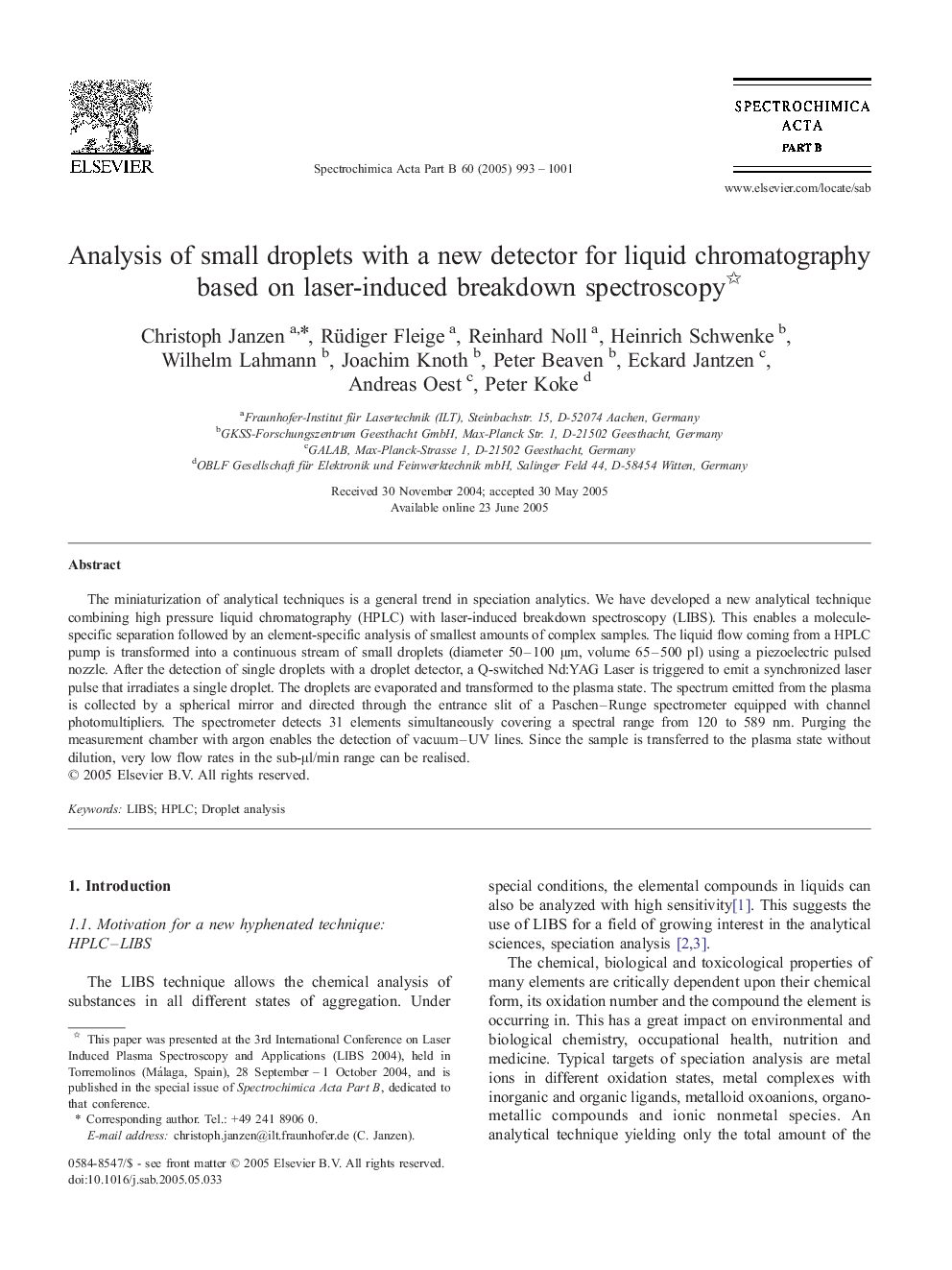| Article ID | Journal | Published Year | Pages | File Type |
|---|---|---|---|---|
| 9757239 | Spectrochimica Acta Part B: Atomic Spectroscopy | 2005 | 9 Pages |
Abstract
The miniaturization of analytical techniques is a general trend in speciation analytics. We have developed a new analytical technique combining high pressure liquid chromatography (HPLC) with laser-induced breakdown spectroscopy (LIBS). This enables a molecule-specific separation followed by an element-specific analysis of smallest amounts of complex samples. The liquid flow coming from a HPLC pump is transformed into a continuous stream of small droplets (diameter 50-100 μm, volume 65-500 pl) using a piezoelectric pulsed nozzle. After the detection of single droplets with a droplet detector, a Q-switched Nd:YAG Laser is triggered to emit a synchronized laser pulse that irradiates a single droplet. The droplets are evaporated and transformed to the plasma state. The spectrum emitted from the plasma is collected by a spherical mirror and directed through the entrance slit of a Paschen-Runge spectrometer equipped with channel photomultipliers. The spectrometer detects 31 elements simultaneously covering a spectral range from 120 to 589 nm. Purging the measurement chamber with argon enables the detection of vacuum-UV lines. Since the sample is transferred to the plasma state without dilution, very low flow rates in the sub-μl/min range can be realised.
Related Topics
Physical Sciences and Engineering
Chemistry
Analytical Chemistry
Authors
Christoph Janzen, Rüdiger Fleige, Reinhard Noll, Heinrich Schwenke, Wilhelm Lahmann, Joachim Knoth, Peter Beaven, Eckard Jantzen, Andreas Oest, Peter Koke,
